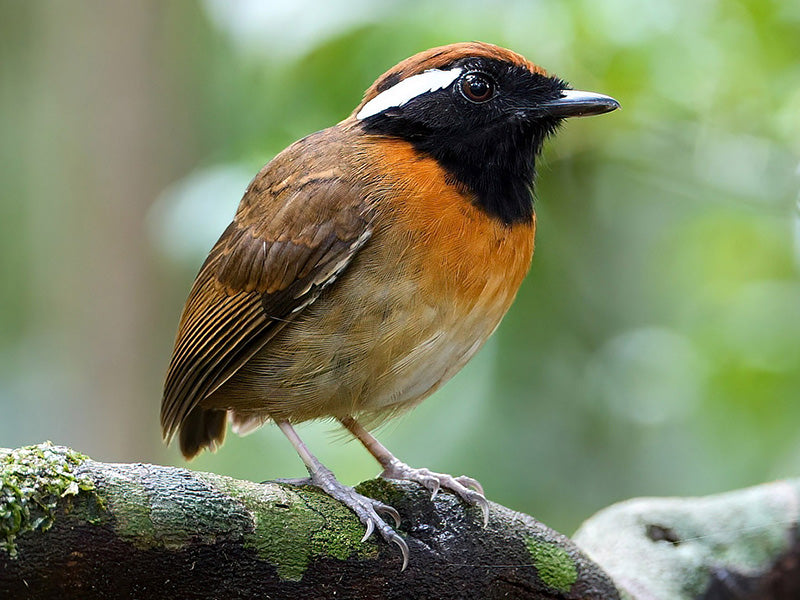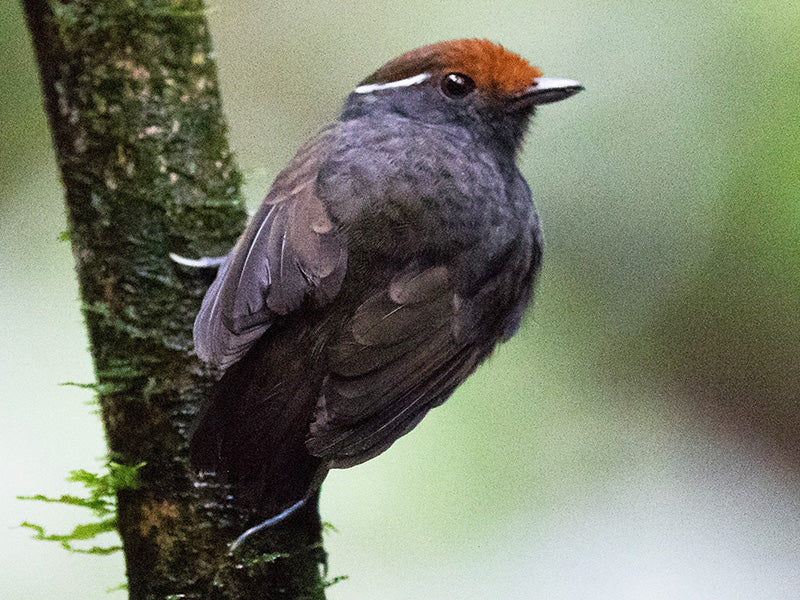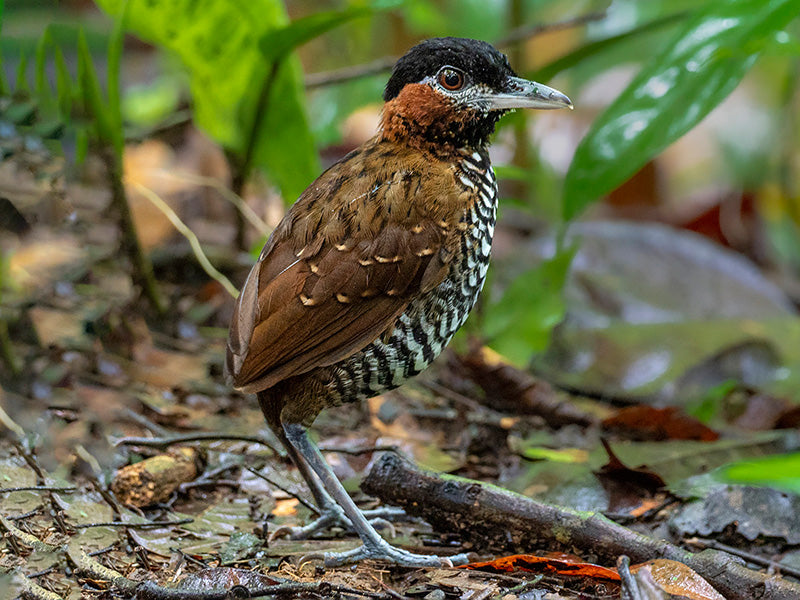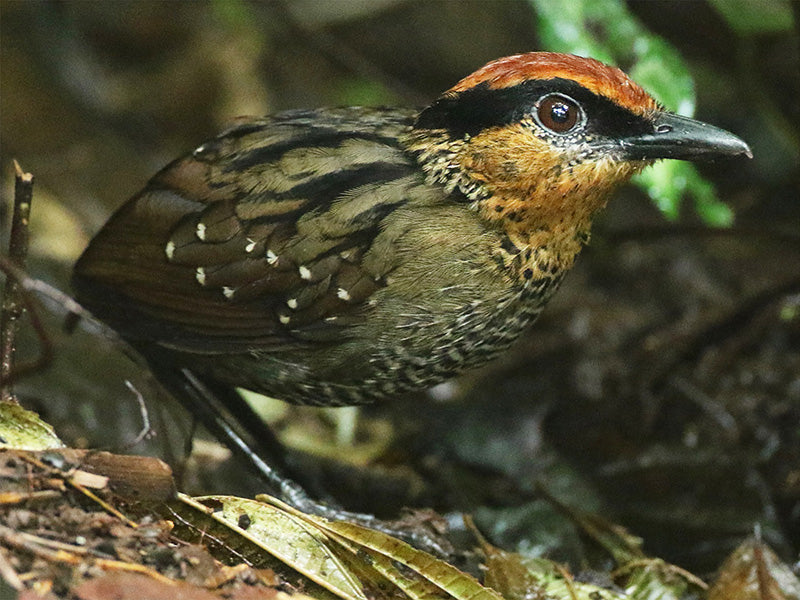Gnateaters
Appearance: Gnateaters have plump bodies with rounded wings and short tails. They exhibit cryptic plumage, generally featuring browns, grays, and chestnut colors that provide excellent camouflage in their forest environments. Different species within the family may have distinct coloration. For example, the Chestnut-Belted Gnateater has a notable chestnut belt across its chest, while the Chestnut-Crowned Gnateater features a distinctive crown.
Habitat: Gnateaters inhabit humid tropical and subtropical forests, including lowland and montane areas. They thrive in dense underbrush, often near water sources, and can also be found in secondary growth areas. They are commonly found at varying elevations, with different species adapting to specific altitudinal ranges.
Behavior: Gnateaters are ground-foragers, feeding on insects and other small invertebrates. They often search through leaf litter, using their bills to probe for food. They are known for their distinctive calls, which can vary between species, often serving as a means of communication, especially during the breeding season.
Breeding: They build their nests on or near the ground, often concealed among vegetation. The nests are typically made of leaves and twigs. Mating behaviors and seasonal breeding patterns can vary among different species, with some species showing monogamous pair bonds.

Chestnut-belted Gnateater
Conopophaga aurita
Spanish Name: Zumbador Pechirrufo
Size: 5 in | 13 cm
Habitat: Lowland tropical forests, often favoring areas with dense undergrowth and a well-developed canopy.
Height: < 500 m
Photo: © Mike Melton eBird S99052727 Macaulay Library ML 404851401

Chestnut-crowned Gnateater
Conopophaga castaneiceps
Spanish Name: Zumbador Pechigris
Size: 5.2 in | 13.2 cm
Habitat: Subtropical or tropical moist lowland forests and montane forests, mainly in the Andes region
Height: 700 - 2100 m
Photo: © Sam Wilson eBird S51901673 Macaulay Library ML 136845201

Black-crowned Pittasoma (Black-crowned Antpitta)
Pittasoma michleri
Spanish Name: Torero Pechiescamado
Size: 7 in | 18 cm
Habitat: Humid temperate forests and montane forests, preferring areas with dense underbrush.
Height: <400 m
Photo: © Andres Vasquez Noboa Macaulay Library eBird

Rufous-crowned Pittasoma (Rufous-crowned Antpitta)
Pittasoma rufopileatum
Spanish Name: Tororoi Cejinegro
Size: 7 in | 18 cm
Habitat: Humid tropical forests, particularly in the mountainous regions of the Andes.
Height: <1200 m
Photo: © Andres Vasquez Noboa eBird S70537812 Macaulay Library ML 244045621

